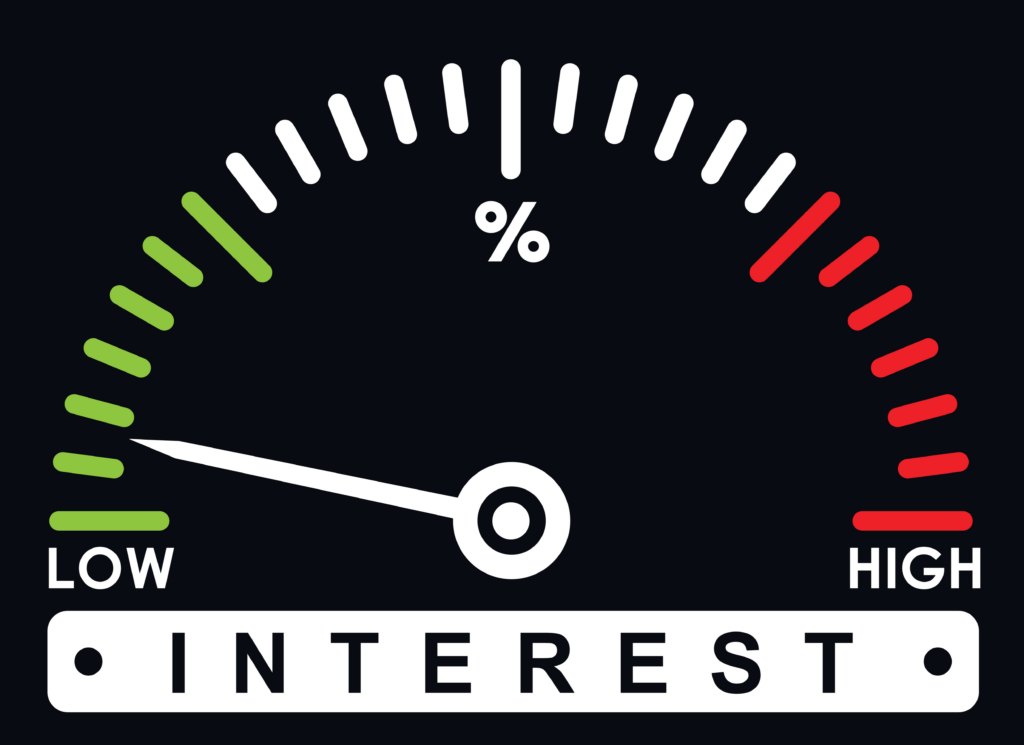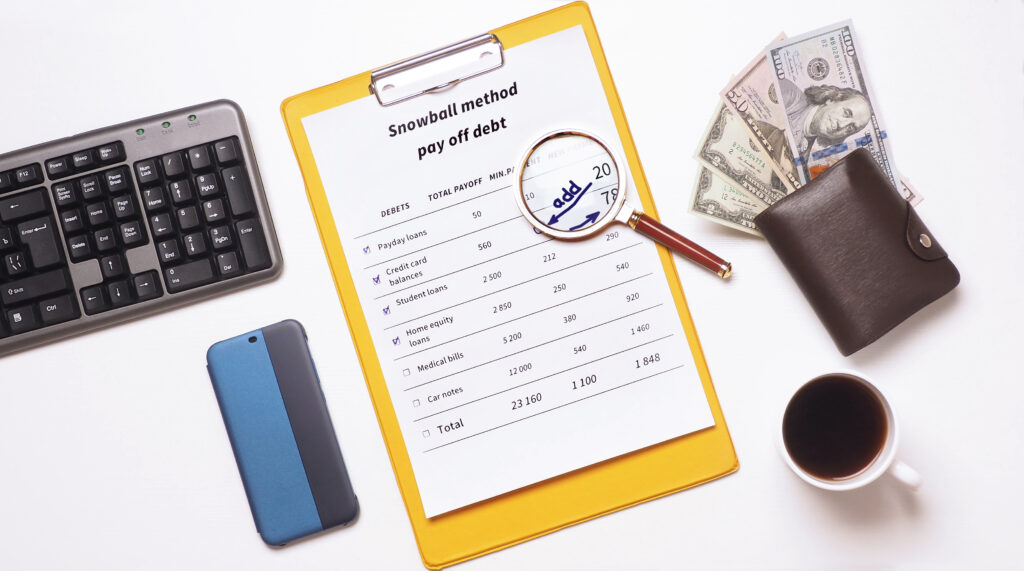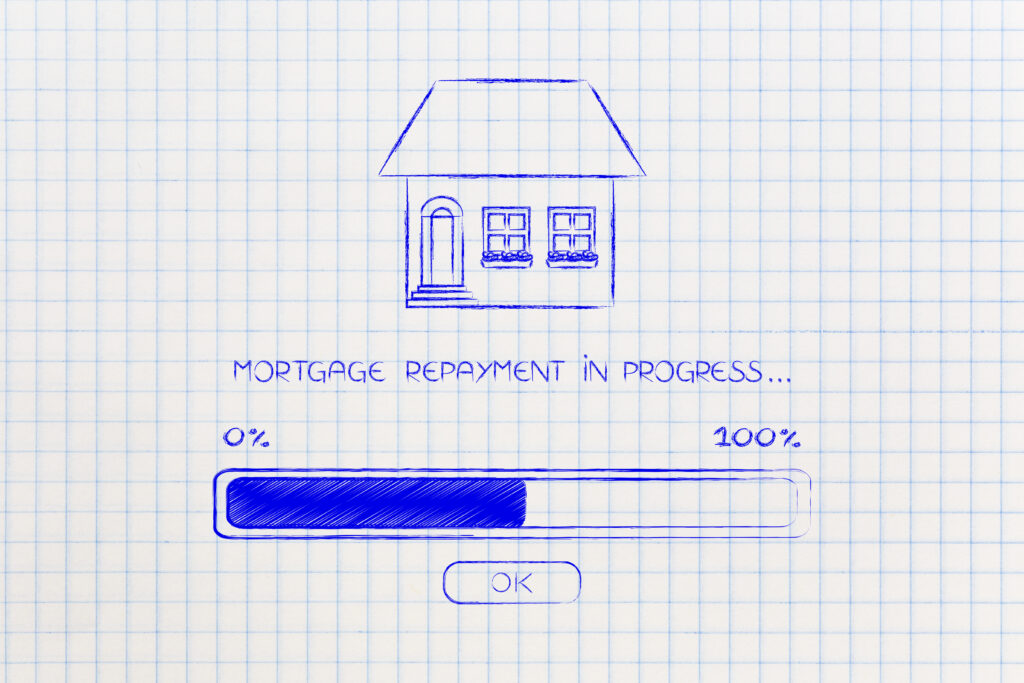To eliminate your debt sounds good, doesn’t it? It can be an important step in feeling financially empowered and ultimately reaching financial freedom. But remember, debt can often serve a valuable purpose, especially when it supports an investment for the future.
There is ‘good debt’ and there is ‘bad debt’. The good stuff represents an investment in yourself or your future financial success. For example, an affordable mortgage to buy your home, a loan to help launch a viable business or educational debt to increase your earnings potential.
Bad debt tends to service unsustainable lifestyle choices. It often builds up on credit cards and store cards. Sometimes, it just can’t be avoided. You may need to dip into the red to get through a rough patch, but it will usually become a drain on your wellbeing, if allowed to drag on.
Follow these 5 steps to get rid of your bad debt as swiftly as possible. Once that’s done, use the same principles to chip away at the good debt, perhaps with less urgency. Repayment of good debt can be balanced more against lifestyle and investment for the future.


1. Review your spending
Let’s deal with the difficult bit first. It’s time to take a detailed and critical look at where your money goes each month. Keep the end goal firmly in mind when approaching this task. It’s not much fun making decisions on what you can cut back on, so think of the positives. Imagine how you will feel when you make that final payment to a credit card, personal loan or mortgage.
The key achievement here is to stop accumulating more debt. Then ideally, free up some additional cash for extra loan repayments. Some people find it helps to stop using credit cards altogether. Switch across to debit cards or maybe even just use cash for spending.
Take time to analyse your bank statements and consider whether any existing subscriptions and memberships can be cancelled or suspended.
Budgeting apps like Emma, Moneyhub and You Need a Budget can help track your spending. Creating new money habits like this can really help focus the mind on where your money goes.
Ruthlessly review your spending and seek to maximise the money you have available for debt repayment. Try to build up a mindset where you savour your spending and consciously appreciate every penny you spend.
2. Assess your interest rates
The next step is to build a clear picture of your debt and how much it’s costing you. Create a list of all your outstanding loans, credit card balances, mortgages, and any other money that you owe. You might need to dig out credit agreements or register for online access, but it’ll be worth the effort.

Assess your interest rates
This exercise should let you see, at a glance, exactly how much you owe and what interest rates you are paying. Sometimes, this alone can prompt ideas. For example, if you realise that you’re paying 23% APR on a credit card, you might consider switching to a 0% deal with another provider.
Or you might discover that you’re paying standard variable rate on your mortgage. If so, it’s time to look for a better deal and free up more cash for debt repayment.
Don’t, however, be lured into immediately consolidating all your debts into one new loan. Think carefully about the best repayment strategy for you.
For now, just create that list using a spreadsheet, a simple pen and paper or even a more visual mindmap with lots of colours and shapes. Whatever works for you, make sure you have a clear picture of where you are.
Deciding how to deal with it is the next step.
3. Design your repayment strategy
A debt consolidation loan is a popular solution when you have various debts. It’s not always the most effective method, though. It often creates a false sense of security and before long, credit card debt begins to creep up again.
Here are a couple of alternative options that can help repay debt more quickly and maintain better motivation:
Debt snowball method
The snowball method refers to the momentum that gathers pace as your debt begins to reduce. It’s a bit like reverse compound interest.
The starting point is to make sure your minimum payments are being made to each of your debts. Then everything else in your debt repayment budget is thrown at the smallest debt first. Pay as much as you can towards it and get rid of it. Then all your budget goes towards the next smallest debt and so on.

This is a great way to build momentum and create motivation as each of your debts disappear, one by one.
It’s great from a psychological perspective, but it’s not necessarily the fastest method. Your smallest debt could also have the lowest interest rate, in which case, it wouldn’t make mathematical sense to repay that one first. For sheer efficiency, let’s look at another option:
Debt avalanche method
Take the same principle as the debt snowball method but this time, rather than starting with the smallest debt, start with the highest interest rate.
This ensures that maximum budget is directed towards reducing your overall interest bill as quickly as possible. So, in theory, this will clear your overall debt faster. But you might not feel the same satisfaction as paying off the smallest of your debts quickly.
Everyone is different and there is no right or wrong answer. A handy calculator from whatsthecost.com helps you work out the best sequence for debt repayment, using either of the methods above. It’ll also tell you the overall cost of each method.
Pick what works best for you. The main thing is to stop accumulating more debt, then enjoy watching it reduce.
4. Track your progress
You’ll now have a clear picture of all your debts and a chosen repayment strategy. But there’s more work to do. Find a way to track your progress. There’s a lot of truth in this quote by management consultant, Peter Drucker:
“What gets measured gets improved”
Peter Drucker
Create a new habit and allocate some time each week or month to review how well your debt is reducing. Create a running total on paper, a spreadsheet or any other tool, so that you can see the numbers come down.
This will help to maintain positivity and reduce the chances of slipping back into old spending habits. In fact, many people find that once they get started, it becomes a little bit addictive. You might find that you challenge yourselves to increase repayments, spend less and reach your target faster.
As your overall debt reduces, your net worth increases. It can be a good idea to recalculate your overall net worth every month or so. This can help see your progress as part of the bigger picture. If you would like a copy of an Excel Net Worth Calculator, visit my “Resources Page” and download one for free.
5. Accelerate your repayments
The steps above might take a couple of months to gain traction, but you’ll be well on the way. Stay focussed and look for opportunities to accelerate progress.

Accelerate your repayments
If you receive a pay rise or a bonus, consider diverting it to support your chosen repayment method. This can be one benefit of using the snowball or avalanche methods, rather than a debt consolidation loan. You’re not tied into an inflexible loan agreement, so you can easily overpay.
Longer term, when your mortgage deal next expires, don’t automatically assume that you should stick to the original term. When getting quotes for a new deal, find out what it would cost to shave a couple of years off the mortgage.
A super resource to help pay off your mortgage as quickly as possible is Sprive. This is an app that helps you to become “mortgage free, faster, cheaper and smarter“. It uses open banking and algorithms to link to your bank accounts and automatically suggest affordable overpayments to your mortgage each month. This could potentially take years off your mortgage.
Avoid lifestyle creep and try to maintain debt repayments at a level that feels slightly uncomfortable. It’s an approach that will help bring your financial independence date closer.
Summary
These steps will help to eliminate your debt and enjoy a more empowered life. It’s a system that works for most people but of course, sometimes it can be much more difficult.
If you feel that your debts are overwhelming and beyond hope, help is always available. There are many alternative debt management solutions, some of which are regulated and beyond the scope of financial coaching. A good place to start is the Step Change Debt Charity.
Even if you do feel in control of your debt, don’t take it for granted. It’s easy to ‘sleepwalk’ into expensive interest rates when deals expire and very few people challenge themselves to reduce their mortgage term. When you next receive a windfall or an increase in your income, could you use it to eliminate your debt more quickly?
For weekly updates about money and life planning, subscribe to my newsletter. And it can be great to talk – why not book a free initial chat for half an hour?




 Production
Production
